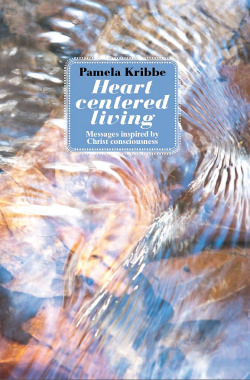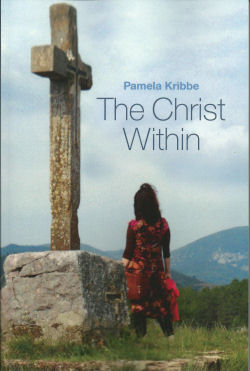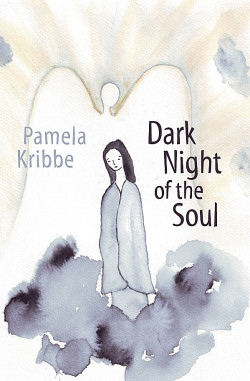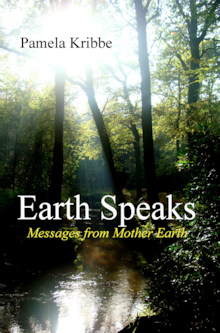What we should teach our children about our Inner World
by Gerrit Gielen
Introduction
We are citizens of two worlds: the outer world and our inner world. When we are little children, the difference between those two worlds is still not very clear. A baby must discover what belongs to him and what does not. When you are a child, this is not obvious right away.
I can remember as a child that I was sometimes afraid in the dark; I saw all sorts of objects. Then I called my mother, who had to scare away those frightening things. I pointed to a corner where I thought I could see something. Then mother waved her hand and said: “You see, there is nothing.” That put me at ease. Later, I discovered that the things I believed were out there, I could also see when I had my eyes closed: they existed in my head. Gradually, I started to become aware of the difference between the inner world and the outer world. Everything outside myself was subject to rigid laws, but not inside myself, where anything is possible. The inner world was mine only, the outer world I shared with everyone.
Typically, however, most children listen to implicit messages they receive from their parents and teachers: everything about the outer world is important, while the inner world is not – you should not devote too much attention to that. We now see the effects of that emphasis on the outer world: depression, burnout, health problems. It goes even further than that. Because we see the world through the eyes of our unconscious fears, we see enemies even when they are not there. As a result, there are enemies and battles everywhere.
All these problems can be avoided if we would raise our children differently – if we would teach them how to deal with their inner world – if we would encourage them to learn to appreciate the richness of that inner world – if we would teach them to approach the dark side of their inner world lovingly rather than condemn it – if we would communicate to them that the inner world is infinite – if we would impart to them that deep in that inner world lies an infinite source of wisdom that they can always return to.
We can not neglect our inner world unpunished. The price we pay we see around us.
Hence this short guide. Here are three lessons about your inner world which you already should have learned as a child at school.
1 Be conscious of your fears
If we do not learn to face our fears, they become the colored glasses through which we see reality. That means we see things in terms of right or wrong, and that we will have to work hard in order not to be the victim of wrongdoing. We are pulled away from life’s pleasures.
An example: an acquaintance of mine from France made an exceptional picture of a female spider that has a special cocoon in which she carries her eggs.

Sandrine, the woman who took this picture, feels a special bond with small animals, such as spiders and insects, and she makes amazing pictures of them. She also communicates with them. Sandrine herself is a beautiful Frenchwoman who radiates a deep love for everything that lives.
Like many people, I find spiders a bit scary. That is also how I felt when I first saw the picture. Then I tried to view it through the eyes of Sandrine, and I felt something of her love for the little fellow inhabitants of this planet. All of a sudden, I saw something wonderful, something delightful, something intimate. A very different living creature than the one I am, but one that still has a unique place in the universe; and, in her own way, takes loving care of her eggs.
When I look through the eyes of fear, then there is something frightening, something other than me, a duality: the spider, a strange creature that might threaten me; a being I don’t want in my universe. When I look through the eyes of Sandrine, the duality then disappears completely. To see this happen is quite an experience. Fear creates duality, love lights it up.
When I look at the dark with fear, it is something dangerous, stands opposite to what is the light and threatens me. When I look at the dark with love, then I see a place where there is no light and I hear a scared, lost child who calls for help, the source of my fear.
When we want to live in this world in a harmonious way, then we have to look inside and observe all our fears honestly.
How do you do that?
Imagine that your fears are just small children who have hidden themselves somewhere deep inside you. Those children have names; for example, loneliness, poverty, pain, sorrow. Maybe there is even a child there called death. These are the names of the lost children who call for help. Call them forth and embrace them all. They are part of you and are part of your inner world. In this way, you bring your light to your own inner darkness.
If we do not become aware of our fears, then those fears color our glasses and appear to us as our reality. Then, when we grow up, we surround our fears with all kinds of ideas that reinforce those fears. Fear always gives a negative message about the world around you. Eventually, those ideas become seen as compelling truths about the world.
By seeing your fears as lost children inside you, and by embracing them lovingly, you take off those glasses and you can see the world around you through your original light: the light of love. Duality disappears and returns as unity.
It’s normal to have all kinds of fears. Only if we are able to face those fears honestly can we transform them and the world around us in a loving way.
Duality is in the eye of the beholder.
2 . Imagination is the way to our inner wealth
During consultations and workshops, I often hear people say: “I’m not sure if this is only my imagination.” I always sense that people have the idea that they are not allowed to fantasize. There is apparently a kind of taboo against that.
Nevertheless, so much that is beautiful has been created by humanity. Think of all the wonderful music, paintings, literature, movies, architecture – all that has arisen from the imagination of humans. Also, the great scientists and philosophers had a great imagination. Still, at school, there is, unfortunately, no time period set aside to fantasize. If there were, we would all appreciate and use our imagination more creatively: it is taught at school, therefore it must be important. Unfortunately, that is not the way it is.
Maybe you even tell yourself that you have no imagination. No? Have you never had sexual fantasies? When you were a kid, did you never fantasized about your future? About a dream home? Never dreamed about an ideal partner, a job you’d like to have? Fantasized about a trip to a distant land? Believe me, you have plenty of imagination: with every thought about the future, you use your imagination.
If you want to learn to use your imagination creatively, then step one is that you acknowledge that you often use your imagination; it is part of being human. In some people, it is better developed than in others, and it works differently in each person and in its own way. Still it is present in everyone.
In some people, their fantasy is highly visual, in others not so much. If it is not that way with you, realize that there are people born blind who do not know what images or colors are, yet they have a great imagination and some write wonderful novels, for example.
Just as every person has dreams, so everyone has the ability to fantasize.
Step 2 is that you just simply begin to exercise your imagination. Fantasizing is something you can develop. Just like with everything, what also applies here is that “practice makes perfect”. Repetition is the key and that you take time for it. As your inner world notices that you take time to learn to use your imagination, it will come to your aid.
A very simple exercise is to imagine you are talking with a wise man or woman. If you are female, choose a man and vice versa. This helps you to feel as a complete person who is both male and female. If you have difficulty imagining someone, take a person from history.
Start the conversation and fantasize what the answers would be. For example, talk about a problem you have. Be not afraid to imagine what kind of replies you get; make it a dialogue. To me, this works best when I write down the answers. At some point, you’re going to notice that the fantasized answers come quite easily. You actually no longer have to think about them.
And then comes a moment when you realize: “Hey, what I hear now is very special.” That is when you have connected your imagination with a deeper source: the deep layer of wisdom in yourself. When you have restored contact with that source, you can make the decision: “I have authority over my life.” The final authority is not someone outside you, but who lives within you. In you is only one person – you. You have authority over your life.
People have given away their own inner authority because they think they are ignorant. Using your imagination, you can, however, get in contact with your inner source of wisdom. At the moment you realize you can take authority over your life, self confidence is born.
3 Learn to think positively – and above all to understand what it is
There is a lot of talk about the power of positive thinking. All groups of people are engaged in endless repetition of thoughts like: “I am rich.” But that really does not help.
How then should it be done in a way that does help? It starts with the assumption that deep inside you is a source of light and love: your core.
There are two types of thoughts. There are thoughts that are in harmony with the light from that source, and that strengthen the light and ensure that it flows through to the Earth. Then there are also thoughts that block the light from that source and hang there as dark clouds. These are thoughts that are based on fear. For example, if you want to be rich because you are afraid of poverty than that is, in fact, not a positive thought.
This can be practiced. Imagine that source, a brilliant sun, somewhere above your head. Then take a thought in your head. If it is a positive thought, a thought that is in harmony with the source, then you will feel a positive reaction in your body; for example, a warm feeling in your heart. The light flows through from the thought. If it is a negative thought, then the light from your source is blocked.
Notice your body to see if tension arises. Your body feels when the contact with the source is broken and reacts to that, often with a sense of being unsettled. If you notice that, it means that this is a negative thought. Then you ask the question: “What fear is behind this?” Find the source of that fear: a lost child.
Finally: practice makes perfect
In the beginning, this kind of inner work seems a bit like a move to a strange city abroad. If you’re going there for the first time, everything seems odd and confusing, maybe even threatening. Gradually, everything becomes more familiar, the people better known. You start to make friends and you feel at ease.
Something similar also happens if you begin to investigate your inner world. It’s a different world, the rules are different, but gradually it becomes easier and better known.
Imagine the following: every human being on Earth has a plot of ground. Now, imagine that every person surrounds their own plot of land with lots of love and attention; makes it as beautiful as possible. What a beautiful planet the Earth would be.
This is actually the way the Universe is put together. Everyone has a little piece of the Universe. That piece is you, it’s your inner world: the only piece of the Universe that you are in control of, that you don’t see from the outside, but from within. Just look around: no one else is there, it’s all yours.
Do we treat that piece with love? Do we love ourselves? Most often we do not. Usually, we are like gardeners who make lots of comments about the gardens of their neighbors, but totally neglect their own garden and defile it.
We fill the piece of the Universe that belongs to us with negative feelings and thoughts; there is hardly any light in it. We often give ourselves only very little love. Just look at the world around you and see what the consequences are. In most of us, it is winter: the inner Sun does not shine. Let us say “yes” to every piece of our own inner garden. Let our inner Sun – that inexhaustible source of life – shine on each plant, however small it is. Let the winter make way for a beautiful spring.
© Gerrit Gielen
www.jeshua.net







